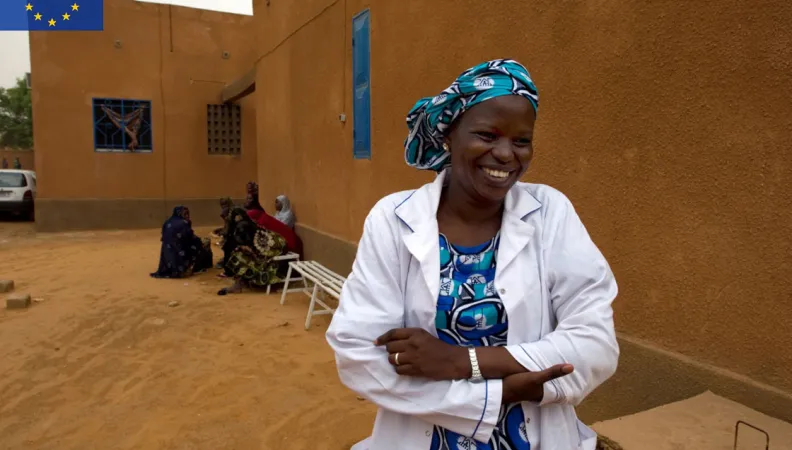Share the page
Assessing equity in health spending in Sub-Saharan Africa - Burkina Faso, Malawi, Zambia

-
Project start date
-
2018Status
Completed
-
Project end date
-
2020
-
AFD financing amount
-
125 000
-
Country and region
-
Location
-
Burkina Faso, Malawi, Zambia
-
Research program
This research project examines the equity benefit of total health spending with particular focus on the recent Universal Health Coverage (UHC) reforms in Sub-Saharan Africa, by looking at the distributional incidence of health spending in three countries: Malawi, Zambia, and Burkina Faso. The research will shed light on the distributional incidence of total spending on health, public spending on health, and UHC-specific reform spending on health, looking both at individual beneficiaries and districts/facilities. The researchers involved in this project postulate that developing an analysis on two levels, individual beneficiaries and district/health facility, is highly innovative and can produce two parallel streams of findings, which, when pooled together, will offer a more comprehensive picture of the equitable or inequitable distributional incidence of the investments made in health.
Contexte
The recent release of the Sustainable Development Goals reinforces the central role of health as a key element of human development, calling for further investments in health as part of a concerted effort to overcome poverty and inequalities worldwide. Specifically, SDG3 reiterates the importance of investing in policies that favor Universal Health Coverage (UHC), defined in relation to access to quality care and financial protection against the cost of illness. The urge to sustain and increase investments in health as part of an overall development policy is accompanied by the need to ensure that the investments made produce benefits for all groups in a society, contributing to reducing existing inequities in access and health status between the poor and the least poor. Evidence on the equity benefit of recent UHC reforms (ranging from user fee removal to results-based financing) is still limited. Similarly, evidence is lacking on whether investments in these recent reforms have altered spending on health at a national health, increasing the distributional incidence of this spending to benefit the poor rather than the least poor, as indicted by prior research.
This project is part of the first phase of the Research Facility on Inequalities, coordinated by AFD and funded by the European Commission's Directorate-General for International Partnerships over the 2017-2020 period. The first phase of the Facility has led to the conduct of 22 research projects and the publication of around 100 research papers and policy briefs.
Objectif
This project aims at assessing whether the distributional incidence of total and public spending on health has become more equitable over time, especially as a function of introducing UHC-specific reforms. The research objective is purposely set not only to describe the inequities in access and in health outcomes that may persist in spite of UHC-specific reforms, but also to explore more explicitly the link between the financial investments made and the benefits accrued across socio-economic groups. This choice stems from a wish to generate analytical evidence on the equity impact of the investments made in health, whether these investments are made by African countries themselves or with support from their development partners. The investigators trust that this evidence is much needed to direct and inform future investments in health. Moreover, keeping in mind this wish to inform policy making in a pragmatic manner, they plan to appraise their findings in the light of the different social and political circumstances that have shaped the emergence and implementation of the specific UHC policies and investments under analysis.
Méthode
The project expands the framework proposed by McIntyre and Ataguba published in 2011 and conducts a quasi-longitudinal benefit incidence analyses to assess the distributional incidence of total, public, and UHC-specific spending (such as user fee removal policies, targeted subsidies, or results-based financing) across all countries over time, measured both at the individual beneficiary level and at the district/health facility level. Traditionally, tables and concentration curves and indexes have been used to display the results of the Benefit Incidence Analysis (BIA). In addition to this traditional approach, the investigators plan to generate maps based on the BIA results to illustrate spatial inequities in the distributional incidence of spending on health.
Furthermore, they will appraise findings in the light of the specific circumstances within which policy decisions on health have been reached in each country, to be able to explain, from a qualitative point of view, what policy elements might have contributed to generate greater or smaller equity.
Results
You may find the research papers here:
- Estimating the distributional incidence of healthcare spending on curative health services in Sub-Saharan Africa: Benefit incidence analysis in Burkina Faso, Malawi and Zambia
- Estimating the distributional incidence of healthcare spending on maternal health services in Sub-Saharan Africa: Benefit incidence analysis in Burkina Faso, Malawi, and Zambia
- Distributional effects of healthcare spending : lessons from Burkina Faso, Malawi, and Zambia
- Assessing inequalities in healthcare spending in Burkina Faso, Malawi, and Zambia: data and methods
- Inequalities in Maternal Healthcare spending: Evidence from Burkina Faso
- Inequalities in healthcare spending on curative services: evidence from Burkina Faso
- Inequalities in maternal healthcare spending: evidence from Zambia
- Inequalities in healthcare spending on curative services: evidence from Zambia
- Inequalities in maternal healthcare spending: evidence from Malawi
- Inequalities in healthcare spending on curative services: evidence from Malawi
Contact:
Cecilia Poggi, Research Officer, AFD
